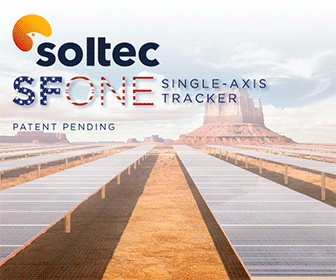Berkeley Lab's Tracking the Sun Report
Lawrence Berkeley National Laboratory is pleased to announce the release of the latest edition of the annual Tracking the Sun report. The report describes installed prices and other trends among distributed photovoltaic (PV) systems in the United States. The analysis is based on project-level data from approximately 1.6 million systems, representing 81% of all distributed PV systems installed in the United States through the end of 2018.
The report, along with an accompanying slide deck, summary data tables, and a public version of the underlying dataset, can be downloaded via trackingthesun.lbl.gov. The report authors will also summarize key findings from the report via webinar on November 12, 2019 at 1:00 pm Eastern. Register here: https://cc.readytalk.com/r/s58adh3r405&eom.
Key findings from this year's report include the following:
- Distributed PV Systems Keep Getting Bigger, More Efficient. Median system sizes in 2018 grew to 6.4 kW for residential and roughly 50 kW for non-residential systems, though the spread in system sizes is also quite wide-especially for non-residential systems, with 20% larger than 200 kW. Increasing system sizes over time partly reflect a steady growth in module efficiencies, which rose a full percentage point to a median of 18.4% among systems installed in 2018. The report also details trends among other system design and project characteristics, including panel orientation, inverter loading ratios, solar-plus-storage, use of module-level power electronics, and third-party ownership.
- Installed Prices Continued to Fall through 2018 and into 2019. The report focuses its analysis of installed prices specifically on host-owned distributed PV systems. Among these systems national median installed prices fell year-over-year by 5-7% across the customer segments shown in the figure below. Those declines are broadly in-line with trends over the past five years. National median installed prices in 2018 were $3.7/W for residential, $3.0/W for small non-residential, and $2.4/W for large non-residential systems. Considerably lower prices are observed among many systems, however.
- Installed Prices Vary Widely Across Projects. For example, among residential system installed in 2018, prices for host-owned systems ranged from $3.1/W to $4.5/W between the 20th and 80th percentile levels, and prices for small and large non-residential systems varied across similarly wide ranges. The report explores sources of that pricing variability, including differences in system size, module- and inverter-type, mounting-type, location, installer, host customer-type, and new construction vs. retrofits. This year's report also contains a more-formal statistical analysis to isolate the effects of individual pricing drivers, including characteristics of the local PV market related to market size, competition, and installer experience, among other factors.
Lawrence Berkeley National Laboratory | emp.lbl.gov









.jpg?r=7224)

.gif?r=3576)
.jpg?r=4789)